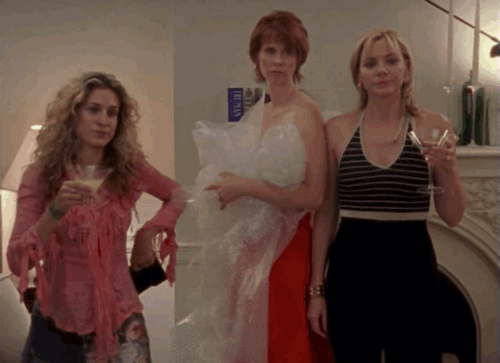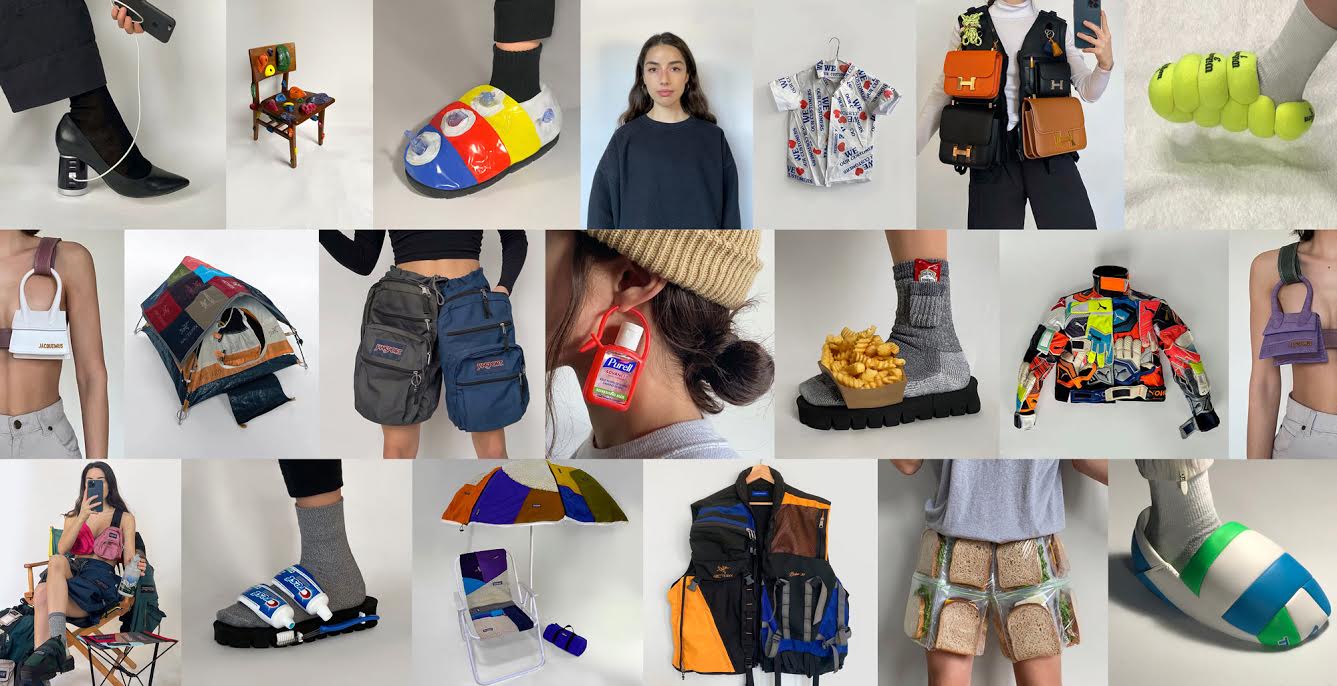The fashion industry may appear ever-changing, but like any other industry, it has its fair share of dishonesty. Take organic cotton products, for instance. While they are marketed as environmentally friendly, many of them are no different from “light” products on supermarket shelves. Although they are produced without harmful chemicals, the fabric is often dyed using chemicals, rendering the “organic” attribute invalid. Unfortunately, consumers often fail to question these details when making their purchases. Moreover, the cost of truly sustainable “green fashion” remains high for mainstream companies in a retail industry that is on the decline. While consumer awareness is growing and companies are showing willingness, we are still grappling with the challenge of achieving both sustainability and trendy fashion.
Fashion is cyclical, and until we find ways to produce ethically, pay workers fairly, and protect the planet, I highly recommend thrifting. With renowned brands like Vetements, who initially started their business by upcycling, and stylists like Mimi Cuttrell, who expertly mix current and vintage luxury pieces for stars like Gigi and Bella Hadid, wearing second-hand clothes no longer carries the stigma of being shabby and unkempt. Many classic designer labels have ceased manufacturing like they used to, which means finding vintage Helmut Lang pieces, for example, guarantees better quality compared to today’s offerings. The iconic Fendi “Zucca” monogram design, created by Karl Lagerfeld and made famous by Patricia Field in the ’90s through the series “Sex and the City,” has remained unchanged over the years. Therefore, whether you bought the bag 30 years ago or last week, no one would know the difference.
Check out these thrifted Fendi Mules, bought for only €25.
Thrifting, upcycling, restoring, swapping, digging through flea markets, and browsing eBay—it’s a vibe! Brands like “Frankie Collective,” which upcycles vintage sportswear and Supreme pieces into hot new streetwear, and “Nanin Vintage,” who cleverly style and sell basic vintage pieces, have already gained popularity as well-known brands with around 250k followers each on Instagram.
To navigate the world of thrifting like a pro without compromising your style, follow these expert tips:
- Educate yourself on materials, designers, upcoming trends, and how to handle damage. Knowledge is key. Understanding the feel of silk and cashmere, staying up-to-date on current trends, and being able to differentiate between permanent stains and store dirt will greatly benefit your thrifting endeavors. Seek inspiration from your favorite celebrities, online shops, and “trip to the thrift” videos on YouTube. If you lack inspiration, it’s not the ideal time to go hunting. While shopping, pay attention to material tags and challenge yourself to guess the fabric. This skill is essential to avoid ending up with a closet full of polyester.
- Explore every second-hand shop you come across. Increase your chances of finding treasures by investigating and mentally mapping out what each store specializes in. Knowing which shop has a strong accessory section or where to find clothes from a particular decade can save you from frustration. Whenever you stumble upon a small charity shop, even if you hadn’t planned on shopping, take a quick peek and add it to your mental map. You can always return another day.
- Carry your smartphone for research purposes. If you want to avoid investing in worn-out fast fashion or overspending on subpar items, use your phone to search for unfamiliar labels.
- Bring cash and a reusable carrier bag. Not all small shops accept cards, so having cash on hand ensures you won’t miss out on a great find. It also helps with budgeting and setting personal limits. Additionally, bring a bag that suits your shopping needs. Personally, I opt for one of those large IKEA bags, as they allow me to accommodate puffer jackets and coats that are often too big for the bags provided by stores. This reduces plastic waste and avoids frustration.
- Take your time to thoroughly inspect clothing items. Nothing is more disheartening than bringing home a treasure only to discover a broken zipper or other defects.
- Practice shopping karma by donating. It may have a spiritual dimension, but it’s also based on personal experience. Whenever I shop, I inquire if the store accepts donations and if so, I bring clothes I no longer wear to contribute to the vintage shopping cycle. Besides the potential spiritual benefits, you’ll find that people remember you and may offer special discounts here and there. It really works! Being nice pays off.
- Avoid going in with specific expectations. Expectations limit your perspective and prevent you from discovering unexpected gems. While it’s good to have a general focus, be open to alternative options. Remember, vintage shopping, like life, is full of surprises.
- Embrace showy pieces without fear. Often, the most eye-catching items in your wardrobe will receive the most compliments. Being a little extra is fun and adds uniqueness and memorability to your outfit. Ultimately, it’s all about how you style your treasures.
- Break free from gender, category, and size constraints. This is one of the best pieces of advice I can give you. If you’re looking for a cute dress but can’t find one in the dress section, explore the nightwear section for silky slip dresses. Personally, I love suit pants with a shrunken look, and there are plenty of charming granny pants available with unconventional sizing that you won’t find by looking for your regular inch size. When searching for cute skate pants, try browsing little boys’ pants, which often have different sizing. For the perfect oversized blazer, consider exploring the men’s section. Be open-minded and experiment! This will contribute to your personal growth, and once you know you could be a size 26×30, a size 19, or a size 176, you’ll master the art of vintage shopping.
- Choose eBay over Amazon for online thrifting. Amazon caters to the convenience-oriented, which goes against the spirit of digging for authentic vintage treasures.
- Be mindful of possible spelling mistakes. When shopping online, keep in mind that there are stunning pieces out there that have been passed down through generations, and sometimes sellers are unaware of their true value. Capitalize on the seller’s ignorance to score great deals. In addition to simple spelling mistakes, check for alternative label monograms. For example, when searching for vintage Christian Dior bags, also search for “CD bag.” Similarly, for Gucci, try “GG,” and for Adidas, consider “Addidas.” No one else will give you this insider tip, but I enjoy a bit of healthy competition. However, it’s crucial to be cautious; if something appears too flawless or is sold by a large seller in another country, it’s likely fake. Don’t be deceived!
- Be prepared to invest time and effort into your purchases. A regular practice I follow is removing unsightly tags, loose threads, and those bothersome pants hangers that tend to stick out awkwardly. I also hand wash or machine wash items and treat any stains. To give old finds a high-quality appearance, I take the time to steam or iron them.
- Value each piece and adopt an old-fashioned mindset. Back in the day, nothing was thrown away without a second thought. When clothing became damaged or worn, it was deconstructed, and any reusable parts were salvaged. My grandmother used to collect buttons, pockets, patches, and even zippers before repurposing the remaining fabric to polish her shoes. This embodies the true spirit of sustainability, and I love engaging in upcycling or DIY projects with items that would otherwise end up in the trash.
- Understand what you’re capable of handling and avoid purchasing items that would require professional cleaning or repairs. Trust me, you’ll never find the time to do it yourself, and the costs are often higher than expected.
- When styling your thrifted purchases, embrace mixing and matching. Take inspiration from Carrie Bradshaw and create unique outfits by combining luxury items with no-name brands and blending old with new. That €2 jacket from the flea market will take on a completely different look with the addition of a Dior brooch.




























